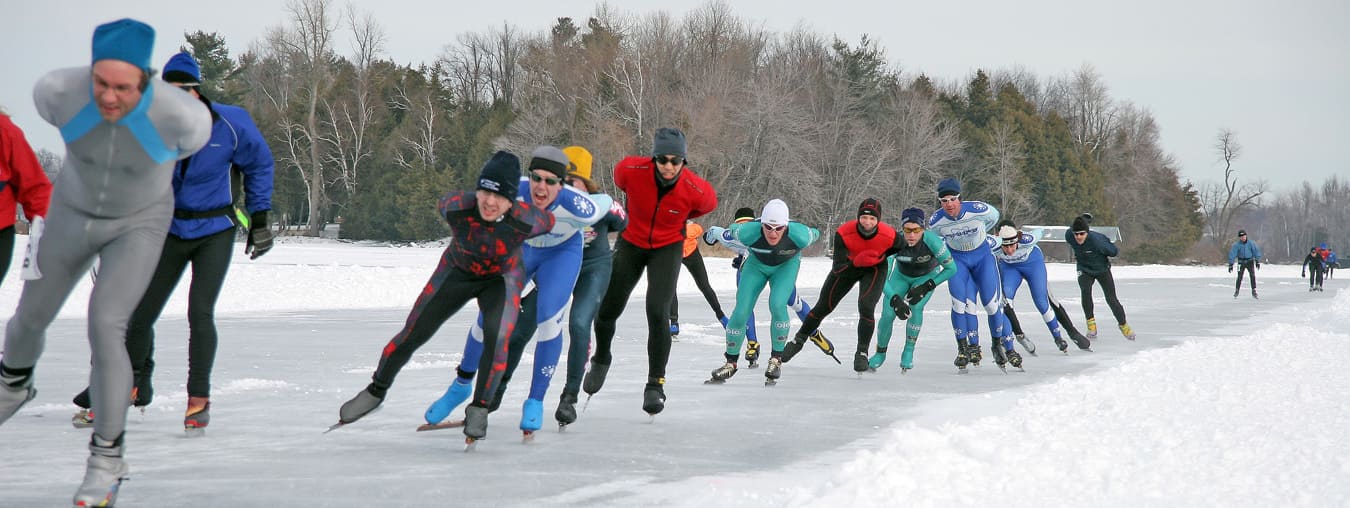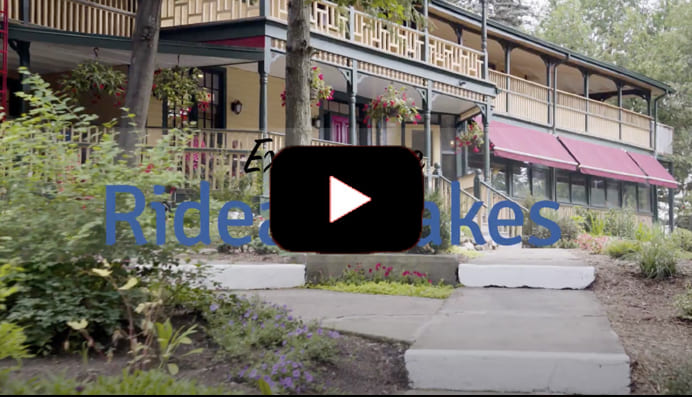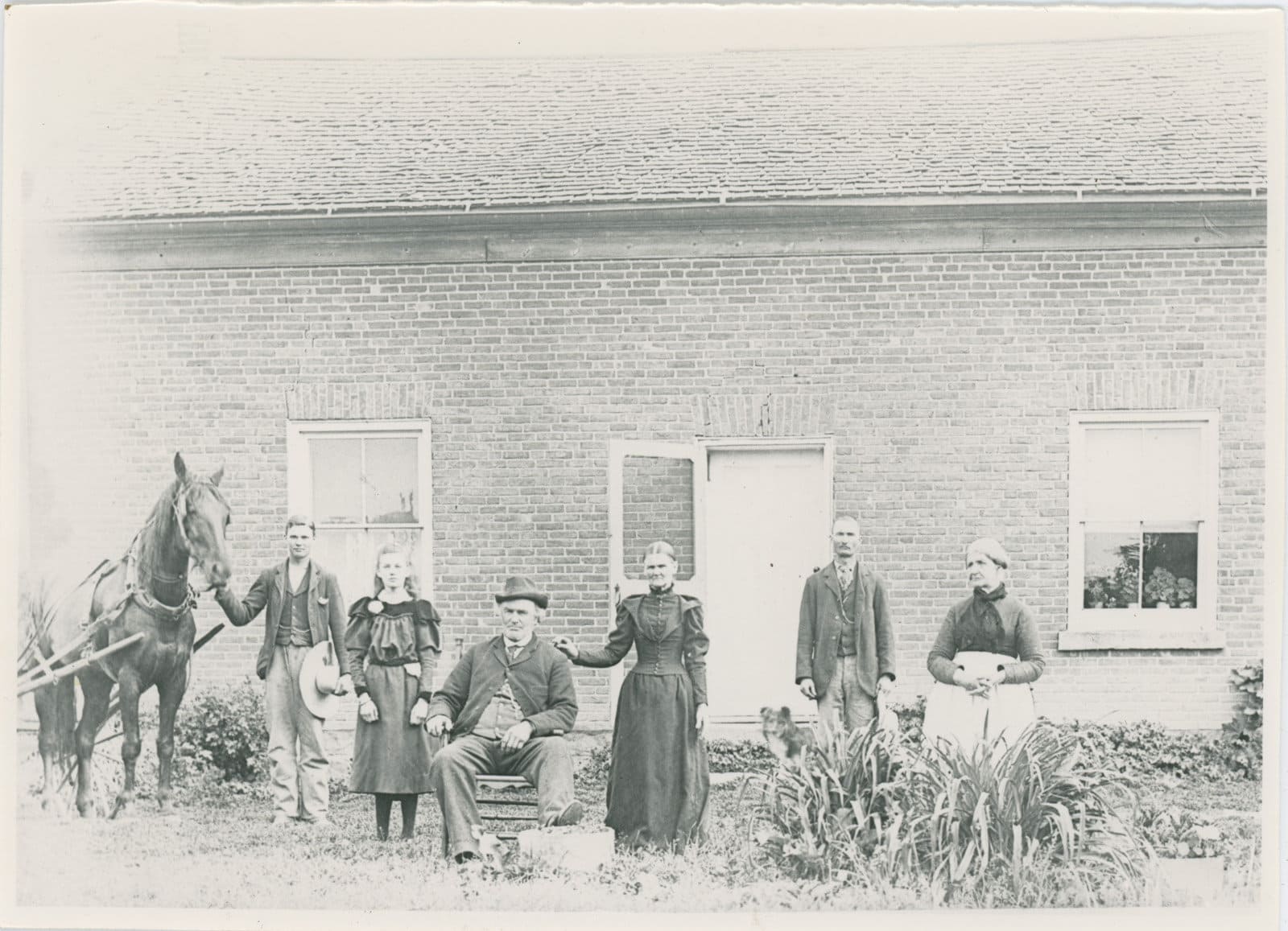 There are a lot of theories about why this historic settlement is called The Bush, but probably the best explanation is that it was in the “bush” – a wilderness area when the road was named. This part of historic South Crosby was one of the first settled areas in the township.
There are a lot of theories about why this historic settlement is called The Bush, but probably the best explanation is that it was in the “bush” – a wilderness area when the road was named. This part of historic South Crosby was one of the first settled areas in the township.
Abraham Coon is the first well-recorded settler in this area. He came to South Crosby about 1809 after marrying Sabra Halladay. Coon’s father, also Abraham, was a United Empire Loyalist from Kingsbury, Washington County in New York who had arrived in the Brockville area when Abraham was a child. In 1813, his neighbors were Thomas Ripley and Walter Davis Sr. who also lived south of present-day Elgin.
After Coon’s first wife died young after having two girls, he married Sylva Sly and preceded to have a very ten more children. Many of his descendants live or cottage in the area today. The farm remained in the hands of the family for several generations. His children were an adventurous group. Lois, one of the older daughters, married Arnold Stevens. The young couple converted to Mormonism in the 1830s and were some of the earliest settlers in Utah. Lois continued to write back to her siblings for the next 50 years. A younger son, Abram, took part in the California gold rush as well as gold rushes in Australia. In 1868, he was ambushed by Sioux on his way back to Canada from North Dakota and died out there. As with many early settlers, we just have bits and pieces of information about Abraham. Legend has it that because the road ended at his house in the 1820s, he would carry messages by foot to Jones Falls to the contractor there. The land was good, and he was obviously quite prosperous. It appears he paid for his taxes with potash, manufactured on the farm.
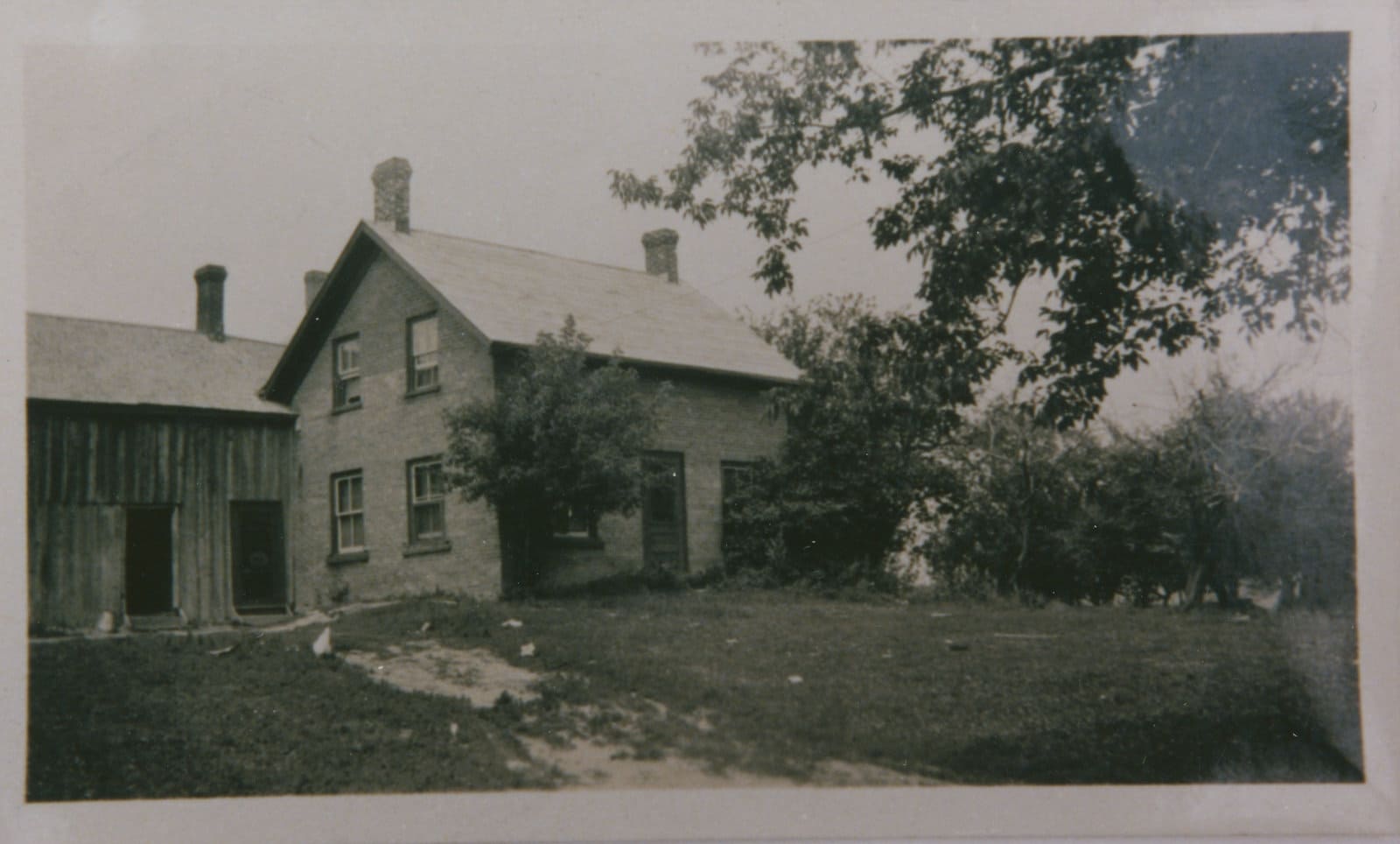 His son Luther eventually built a large brick home on his east section of the original lot around 1860 around the same time as his marriage to Jane Dancy, the daughter of another neighbor. Luther’s name and the date 1864 were carved carefully into a fireplace he built shortly after the construction of the house. Uther and his sons were later involved in milling in Morton for a number of years. Justus, another brother, inherited the other section of the farm and built a stately brick around 1860 which later was purchased by the Carty family in 1909 who owned it late into the twentieth century.
His son Luther eventually built a large brick home on his east section of the original lot around 1860 around the same time as his marriage to Jane Dancy, the daughter of another neighbor. Luther’s name and the date 1864 were carved carefully into a fireplace he built shortly after the construction of the house. Uther and his sons were later involved in milling in Morton for a number of years. Justus, another brother, inherited the other section of the farm and built a stately brick around 1860 which later was purchased by the Carty family in 1909 who owned it late into the twentieth century.
Another early family was the Henderson family who ran large orchards of plums and apples in the 1840s. Johnathan Henderson was a Quaker originally from Vermont. We know that Henderson and his wife Clarissa had two daughters. Henderson’s second daughter Parthena Newman was a well-known weaver in the area. His son-in-law Samuel Newman continued the operation of this farm for many years and his son Almon built an early cheese factory, Maple Grove Johnathan’s ceremonial sword was used to cut the cheese in this early factory. Almon later became a general store owner and eventually moved to Carleton Place. Another grandson Terrance was noted for his large girth tipping the scales at 500 pounds. Eventually, the property was acquired by the Powell family who remain there to this day.
Another early settler was John Smith, who probably worked as a stone mason on the canal during the construction years. He occupied the land at the so-called Burnt House corners which is where the Bush Road and Sand Lake road intersect. John was a close friend of lockmaster Peter Sweeney in Jones Falls and is often recorded entertaining canal officials at his home, hunting on the other side of Sand Lake and providing shelter for Catherine Sweeney when she was fleeing her bad-tempered husband. John and his wife Mary Morris are both buried in the Ripley Cemetery. He died in 1869 and after that his land was split between two of his sons. Charles and his wife Cephronia were living in the original house when it burned in the 1890s. They purchased the Morris-Ross house further down Bush Road where members of the family continue to farm to this day. William Henry, an older son, built a large brick house around 1870. William Henry remained a bachelor. When he died the house passed to the Kerr family, relatives of the Smiths. Since his death in 1905, the house went through a number of owners including the Portland Lumber Works where the house was used as accommodation for loggers.
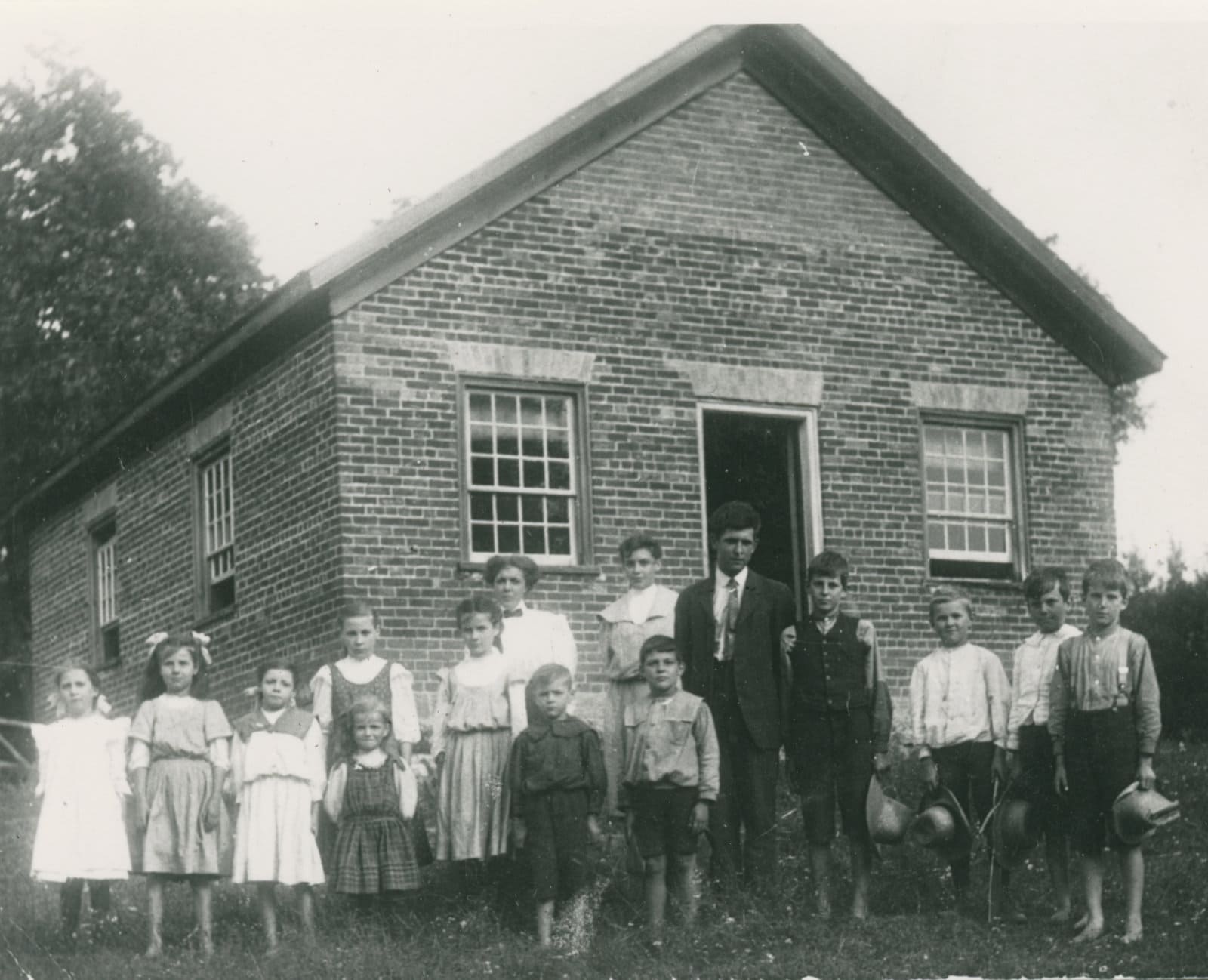 Another early settler on the Sand Lake Road was a man with the unusual name of Pockrage Dancy who had arrived from Ireland around 1824. He soon found work as a farm labourer for the Topping family and eventually worked as a teamster drawing stone from the Halladay quarry for the construction at Jones Falls. In a few years he married Eleanor Topping, one of the many daughters from this family. The couple were able to actually purchase this lot by 1842 and within about 15 put up a brick house. It is unusual because it uses two kinds of brick. Family tradition states that the lower half was constructed of handmade bricks from the clay found on the Smith property nearby. The upper half was finished with brick from the newly opened Morton brickyards. The house eventually passed from the Dancys in the 1930s and became the home of Clare Churchill, a local historian and farmer. The Dancy school as been in existence at least since 1850 probably originally as a log building. It was rebuilt in brick, used as a school until 1958 and now is a private home.
Another early settler on the Sand Lake Road was a man with the unusual name of Pockrage Dancy who had arrived from Ireland around 1824. He soon found work as a farm labourer for the Topping family and eventually worked as a teamster drawing stone from the Halladay quarry for the construction at Jones Falls. In a few years he married Eleanor Topping, one of the many daughters from this family. The couple were able to actually purchase this lot by 1842 and within about 15 put up a brick house. It is unusual because it uses two kinds of brick. Family tradition states that the lower half was constructed of handmade bricks from the clay found on the Smith property nearby. The upper half was finished with brick from the newly opened Morton brickyards. The house eventually passed from the Dancys in the 1930s and became the home of Clare Churchill, a local historian and farmer. The Dancy school as been in existence at least since 1850 probably originally as a log building. It was rebuilt in brick, used as a school until 1958 and now is a private home.
Another school, The Bush school on Jacob property (on present day Highway 15), was one of the earliest schools in the area. Sweeney lent his oxen to draw logs for this school around 1840. Like the other one-room this school closed about 1960. Eventually, like most of the others, the log school had been replaced by a frame building.
Other fine homes line the Bush Road including the stone Dobbs house.
By Sue Warren
Municipal Heritage Advisory Committee, Township of Rideau Lakes












